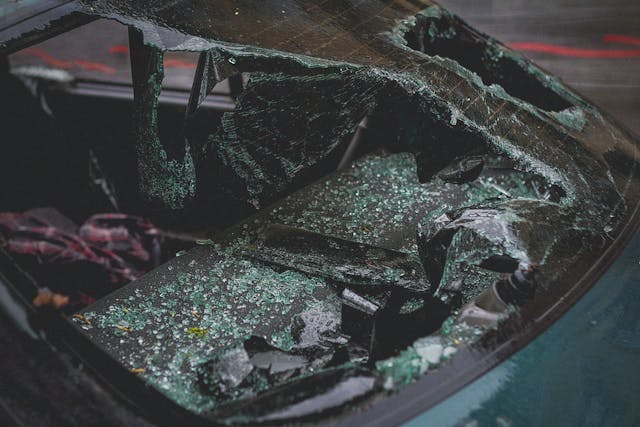
What Are the Common Challenges in Pedestrian Injury Claims?
The contents of this web page are for informational and educational purposes only, and nothing you read is intended to be legal advice. Please review our disclaimer before taking action based upon anything you read or see.
Navigating the aftermath of a pedestrian accident can be both confusing and overwhelming. For those injured while walking, running, or standing by the roadside, seeking justice and compensation is crucial. However, pedestrian injury claims come with their own set of challenges. Understanding these hurdles can help victims prepare better and fight effectively for their rights. This article outlines the common obstacles faced during pedestrian injury compensation claims and offers insights into how to overcome them.
What Are the Common Challenges in Pedestrian Injury Claims?
Proving Fault
Proving fault in pedestrian injury claims is often more complicated than other accidents. It requires demonstrating beyond doubt that the driver’s negligence directly led to the injuries. This might involve collecting evidence such as traffic camera footage, eyewitness accounts, and expert testimony on road safety violations.
The challenge lies in piecing together this evidence to form a compelling argument that establishes the driver’s fault, which is essential for a successful claim.
Dealing with Insurance Companies
Insurance companies are in the business of minimizing their payouts, and they employ various strategies to do so. They might question the severity of your injuries, suggest that your negligence contributed to the accident, or make a settlement offer that falls short of covering your actual losses.
Navigating these tactics requires a strategic approach, often involving counter-evidence and negotiation skills, to ensure you receive a fair settlement.
Gathering Evidence
The strength of a pedestrian injury claim heavily relies on the quality and quantity of evidence presented. This can include medical documentation detailing the injuries, photographs of the accident scene, and testimonies from witnesses.
The challenge here is not only in gathering this evidence but also in presenting it in a way that unequivocally links the accident to the injuries and losses incurred. This process can be daunting, especially when dealing with severe injuries or when evidence is scarce.
Determining the Value of Your Claim
One of the trickiest aspects of pedestrian injury claims is accurately determining the value of your claim. This includes current medical expenses, potential future medical needs, lost income, and compensation for pain and suffering.
Each category requires careful calculation to ensure that the claim reflects the full extent of the damages and losses. Projecting future costs becomes even more complex, making it a critical challenge in the claims process.
Statute of Limitations
The statute of limitations sets a strict deadline for filing a pedestrian injury claim, which varies by state. This legal timeframe adds pressure to the already challenging process of preparing a claim, as missing this deadline can result in losing the right to compensation. Victims must balance the need for a thorough investigation and evidence gathering with the urgency of meeting this legal deadline.
Facing Public Bias
Public bias can pose an unexpected hurdle in pedestrian injury claims. There’s a common misconception that pedestrians are often to blame for their injuries, whether due to jaywalking or not paying attention. Overcoming this bias is crucial, especially in cases that go to trial, as it can influence the perception of fault and, consequently, the outcome of the claim.
Navigating Legal Complexities
The legal landscape of pedestrian injury claims is fraught with complexities, from interpreting traffic laws to understanding the nuances of insurance policies. These complexities can be overwhelming for someone without legal training, making it difficult to effectively advocate for one’s rights.
This underscores the importance of seeking experienced legal representation to navigate these waters successfully.
Emotional and Physical Recovery
Finally, the journey to recovery after a pedestrian accident is not just legal but also emotional and physical. The stress of pursuing a claim can be a significant burden, potentially impacting your recovery. Balancing the pursuit of justice with the need for physical healing and emotional well-being is a challenge that requires support, resilience, and patience. Avoid the misconceptions regarding this.
Navigating the challenges of pedestrian injury claims requires determination, knowledge, and the right support. From proving fault and dealing with insurance companies to gathering evidence and facing public bias, each hurdle presents an opportunity to strengthen your claim.
Understanding these challenges and preparing to face them can empower you to seek the compensation you deserve, aiding in your recovery and helping to restore a sense of justice after a traumatic event.

I’m a driven and accomplished law graduate and post-graduate, passionate about sharing my legal expertise via my blog. I hold a Bachelor’s degree in Law from the University of London (UK) and a Master’s in Law from the University of Derby (UK). Both gave me the foundational knowledge and skills to excel in my chosen career path.
Throughout my academic journey, I have gained extensive knowledge in various fields of Law, including Corporate and Business Law in the USA, Criminal Law, International Law, US Copyright law, and most importantly, American Constitutional law.


Comments are closed.